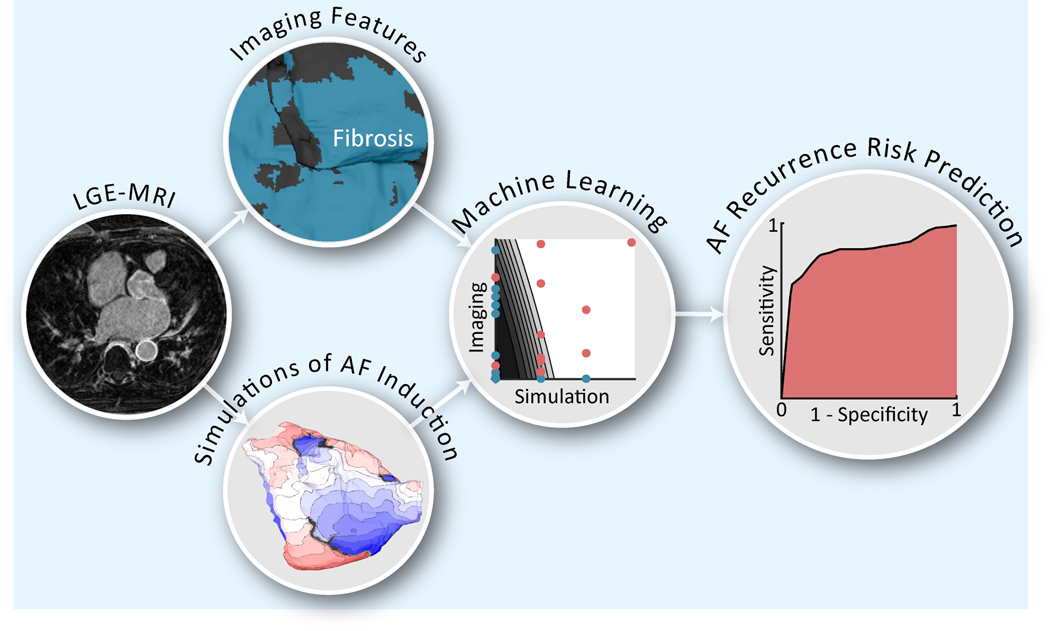Figure 1.

Overview of AF recurrence risk prediction methodology. The flowchart shows our novel machine learning (ML) methodology to predict, before the ablation procedure, atrial fibrillation (AF) recurrence following pulmonary vein isolation for patients with paroxysmal AF. For each patient, a personalized computational model of the left atrium was constructed from late gadolinium enhanced magnetic resonance imaging (LGE-MRI) to simulate AF induction via rapid pacing. Features were derived from the results of simulations (SimAF) as well as from the raw LGE-MRI images to serve as inputs into a quadratic discriminant analysis classifier. Features from SimAF were chosen in two ways: i) based on general knowledge of AF dynamics, and ii) left to be chosen by the ML training algorithm, unsupervised. The ML classifier was trained, optimized, and validated with 10-fold nested cross validation, resulting in the validation receiver operating characteristic curve shown (right).
